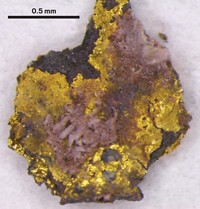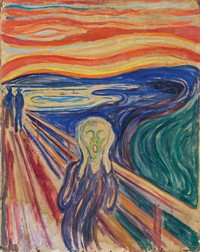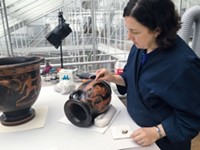Advertisement
Grab your lab coat. Let's get started
Welcome!
Welcome!
Create an account below to get 6 C&EN articles per month, receive newsletters and more - all free.
It seems this is your first time logging in online. Please enter the following information to continue.
As an ACS member you automatically get access to this site. All we need is few more details to create your reading experience.
Not you? Sign in with a different account.
Not you? Sign in with a different account.
ERROR 1
ERROR 1
ERROR 2
ERROR 2
ERROR 2
ERROR 2
ERROR 2
Password and Confirm password must match.
If you have an ACS member number, please enter it here so we can link this account to your membership. (optional)
ERROR 2
ACS values your privacy. By submitting your information, you are gaining access to C&EN and subscribing to our weekly newsletter. We use the information you provide to make your reading experience better, and we will never sell your data to third party members.
Environment
In Lincoln Funeral Train Mystery, Colorful Clues
Microscopy points to precise color of railcar, but spectroscopy may be needed to confirm results
by Carmen Drahl
June 17, 2013
| A version of this story appeared in
Volume 91, Issue 24

When the U.S. military’s railroad agency constructed an official railcar for the newly reelected Abraham Lincoln, agency officials never imagined that they had built his hearse. The car, completed in early 1865, was the Air Force One of its day. But the 16th president did not live to ride in it. Instead, the car, draped in bunting, carried his coffin on a 12-day funeral procession from Washington, D.C., to Springfield, Ill.
Mourners flocked trackside to catch a glimpse of the assassinated leader. Newspapers ran front-page stories. Yet even with all those accounts, scholars are fuzzy on a few important details about the car, such as what color it was painted during an era that predated color photography. Now, a chemist and a conservator think they have solved that mystery. An outside expert, however, would like to see results from a few more tests before declaring the case closed.
The question of color looms large for the sesquicentennial of Lincoln’s death in 2015. A Chicago-based group has planned a reenactment of the historic journey, complete with a full-scale replica of the car. That group, appropriately named the 2015 Lincoln Funeral Train, approached Wayne Wesolowski for a color consultation.
Wesolowski, a retiree who works as a chemistry lecturer at the University of Arizona, is rather colorful himself. He’s as eager to talk chemistry as he is to lament the decline of model trains as a hobby or to describe Lincoln memorabilia for sale on eBay. In the mid-1990s, while he was a chemistry professor at Illinois’ Benedictine University, he directed the Lincoln Train Project. Part of that job involved building a 15-foot replica of Lincoln’s funeral car. At that time, however, he had to guess its color on the basis of conflicting written accounts. The original burned in a 1911 fire.

The entire car was not lost to history, however. Wesolowski tracked down one of its windows. It had been removed years before the fire. The window glass etching, frame size, and hardware match the best photos of the car.
Wesolowski convinced the window’s owner to let him analyze a piece of the trim. And then he called a friend—Nancy Odegaard from the Arizona State Museum.
In the museum lab, Odegaard noticed that the fragment had multiple layers of paint on it. To ensure she was dealing with the original coat of paint, she had to find the bottom layer. She zeroed in on a section of wood that had been under the window glass, a spot post-Lincoln-era painters could not access. She scraped away a few chips of the precious pigment. Then, with a light microscope and a lamp that mimics daylight, she and Wesolowski searched for a color match. They used swatch cards from the Munsell color system, an early-20th-century paint color standard that’s also been used for soil research.

The paint matched a deep maroon shade, Wesolowski says—about 16 parts red to 6 parts black, or 5YR/3/1 as it’s known in the Munsell system. That’s darker than the color he selected to paint his 1995 model.
However, the deep maroon color may have changed with time, cautions Francesca Casadio, senior conservation scientist at the Art Institute of Chicago. The extent of change depends on the paint’s chemical composition. Some 19th-century paints were a mixture of carbon black and iron oxide reds in linseed oil. They likely wouldn’t decompose, she says. But if the paint contained vermilion pigment or coal-tar dyes, it might have faded even if protected by glass. Glass only filters some wavelengths of harmful ultraviolet light, she says.
In addition to a determination of the paint’s composition, Casadio would like to see color confirmation from a UV-visible spectrophotometer. “Munsell cards are valid tools, but they can be subjective,” she says.
Wesolowski is looking for collaborators and funding to carry out those chemical analyses on the pencil-sized piece of history. Thanks to coverage of his work in the mainstream media, he might have more material for follow-up tests. “Because of all this publicity,” he says, “I’ve been contacted by people claiming to have pieces of the car that I didn’t know survived.”





Join the conversation
Contact the reporter
Submit a Letter to the Editor for publication
Engage with us on Twitter